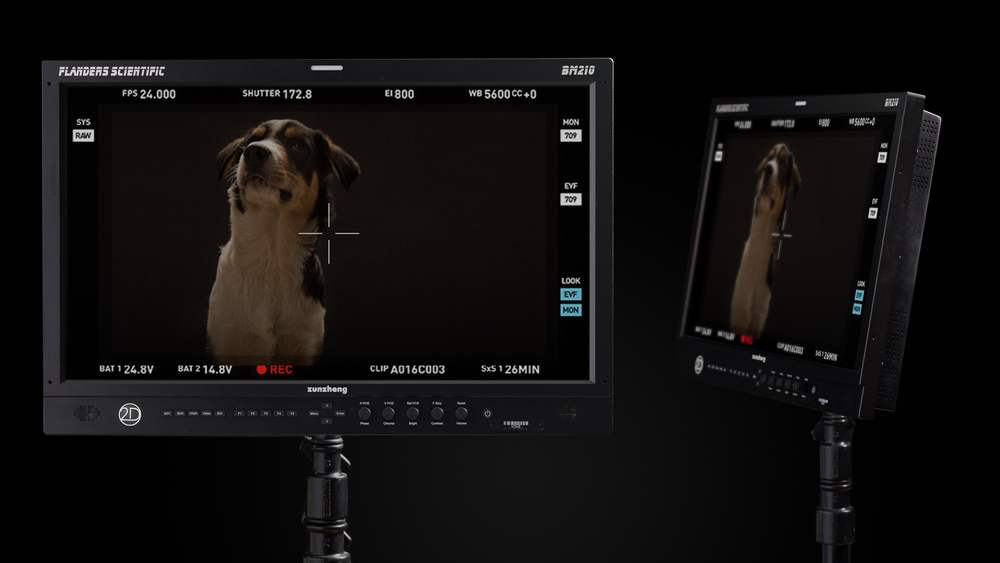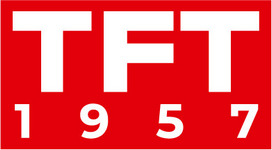
Director’s Monitor Showdown: Flanders Scientific DM250 vs. TVLogic LVM-245W Which Reigns Supreme on Set?
When directing a production, the right monitor can be an invaluable tool to ensure that every shot is framed and exposed to perfection. Today, we’ll be comparing two of the most popular larger director’s monitors in the industry: Flanders Scientific’s DM250 and TVLogic’s LVM-245W. We’ll tackle four main points, share some real-world examples, and delve into the nerdy technical details that gearheads adore. But first, let’s take a quick trip down memory lane to learn about both brands and their director’s monitor lineup.
A Brief History
Flanders Scientific (FSI) and TVLogic have been providing high-quality monitors to the film and television industry for years. FSI, founded in 2008, has rapidly gained a reputation for creating professional-grade monitors with exceptional color accuracy. TVLogic, established in 2002, is known for its broad range of display products, from broadcast monitors to cinematic displays, all designed with precision and reliability in mind.
Design and Build
The Flanders Scientific DM250 is a 24.5-inch OLED monitor, renowned for its color accuracy, deep blacks, and a wide color gamut. It offers a sturdy design, with a slim profile and durable construction. Its intuitive interface and customizable function buttons make it user-friendly, ensuring that directors can access important features quickly.
The TVLogic LVM-245W is a 24-inch LCD monitor, boasting a high-resolution panel and accurate color reproduction. It features a robust build with an aluminum frame and a built-in carrying handle for easy transportation. Its customizable on-screen menu provides quick access to essential settings and functions.
Image Quality and Calibration
The FSI DM250 boasts a 1920×1080 resolution OLED panel with a 10-bit color depth, ensuring accurate color reproduction and deep blacks. It covers 99% of the DCI-P3 color gamut, making it a reliable choice for color-critical applications. Its built-in calibration capabilities, including 3D LUT support and real-time waveform and vectorscope tools, ensure that your image stays consistent throughout the production.
The TVLogic LVM-245W offers a 1920×1200 resolution LCD panel, providing a sharp and clear image. It supports various color spaces, including Rec. 709 and EBU, ensuring accurate color representation. With built-in calibration tools like waveform, vectorscope, and 16-channel audio level meters, the LVM-245W is a dependable monitor for professional applications.

Connectivity and Functionality
Both the FSI DM250 and TVLogic LVM-245W offer a range of connectivity options, including SDI and HDMI inputs and outputs. The DM250 also supports 12G-SDI connections for 4K workflows, giving it an edge over the LVM-245W in terms of future-proofing.
Both monitors come equipped with a variety of essential functions, such as focus assist, exposure tools (zebra, false color, histogram), and framing guides. The FSI DM250 additionally offers features like live side-by-side monitoring and the ability to store and recall multiple LUTs, providing greater flexibility on set.
Conclusion
In the battle between the Flanders Scientific DM250 and the TVLogic LVM-245W, the DM250 emerges as the winner. While both monitors have proven their worth in the demanding world of film and television production, the DM250’s OLED panel, wide color gamut, and support for 12G-SDI connections for 4K workflows give it an edge over the LVM-245W.
The DM250’s superior color accuracy, deep blacks, and extensive built-in calibration tools make it an ideal choice for color-critical applications. Additionally, the live side-by-side monitoring and multiple LUT storage capabilities provide greater flexibility on set.
Though the TVLogic LVM-245W is a reliable workhorse with an extensive feature set, the Flanders Scientific DM250 ultimately takes the crown, offering directors and cinematographers the precision and confidence they need to bring their creative visions to life.









